Sheep castration cermeony held on riverside of Nam Co in China's Tibet

A child catches a lamb in a sheepfold on the riverside of Nam Co, southwest China's Tibet Autonomous Region, May 5, 2016. A sheep castration cermeony, which has been observed for more than 1,000 years by the herdsmen living in the northern part of Tibet region, was held on the riverside of Nam Co. In order to breed sheep of the best quality, despite a few robust male sheep, most of the male sheep of more than 5 months old here will be castrated and bred as mutton sheep. (Xinhua/Liu Dongjun)
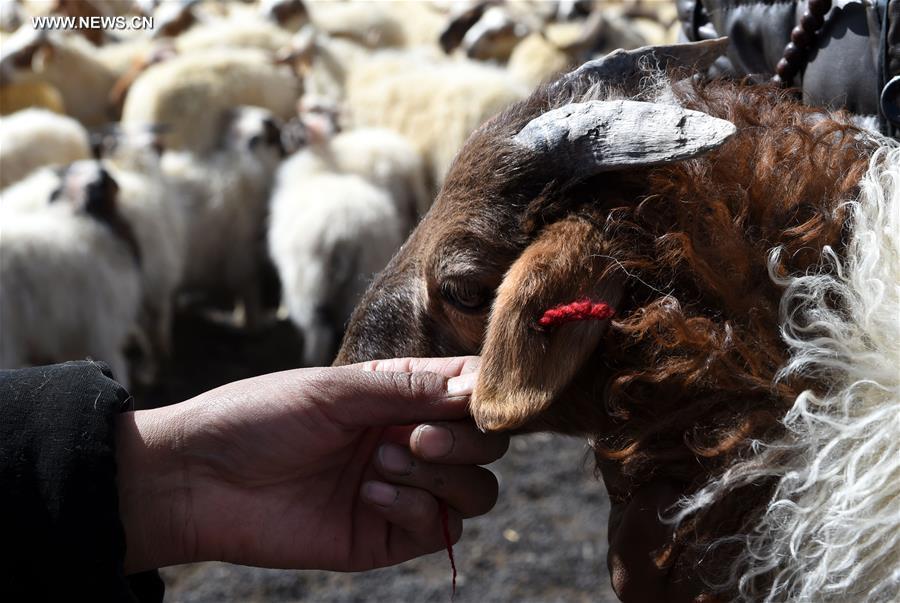
A red thread is tied on the ear of a male sheep to be marked as a breeding sheep on the riverside of Nam Co, southwest China's Tibet Autonomous Region, May 5, 2016. A sheep castration cermeony, which has been observed for more than 1,000 years by the herdsmen living in the northern part of Tibet region, was held on the riverside of Nam Co. In order to breed sheep of the best quality, despite a few robust male sheep, most of the male sheep of more than 5 months old here will be castrated and bred as mutton sheep. (Xinhua/Chogo)
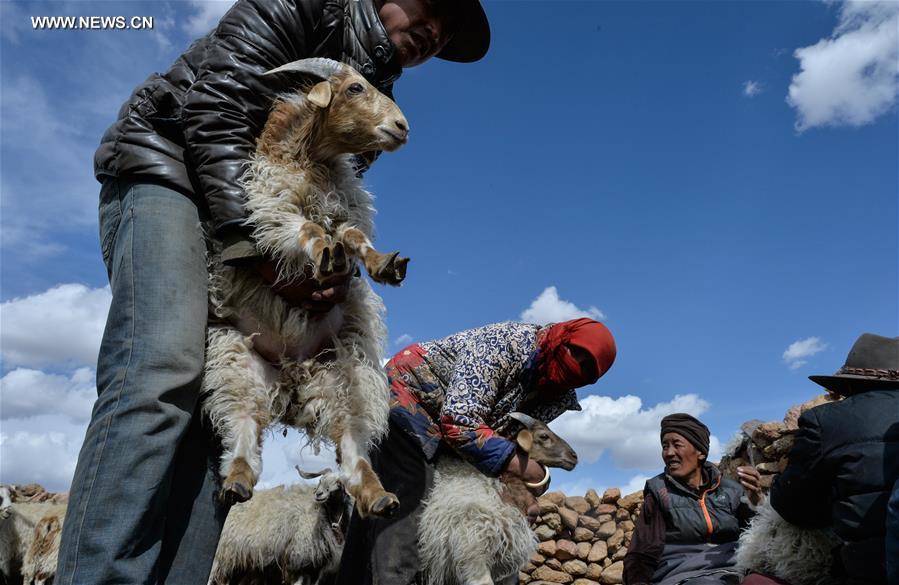
Herdsmen prepare to castrate male sheep on the riverside of Nam Co, southwest China's Tibet Autonomous Region, May 5, 2016. A sheep castration cermeony, which has been observed for more than 1,000 years by the herdsmen living in the northern part of Tibet region, was held on the riverside of Nam Co. In order to breed sheep of the best quality, despite a few robust male sheep, most of the male sheep of more than 5 months old here will be castrated and bred as mutton sheep. (Xinhua/Purbu Zhaxi)
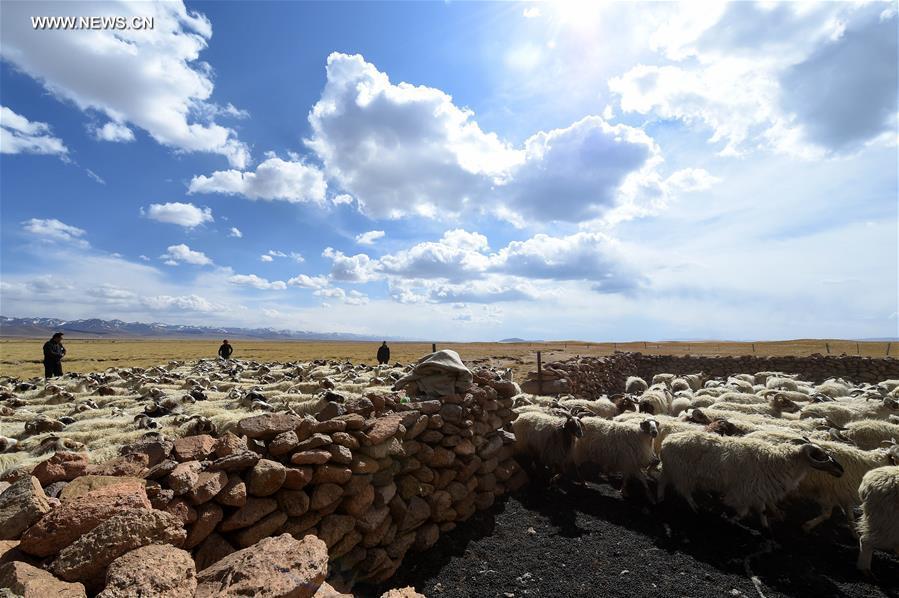
Sheep are driven back to a sheepherd on the riverside of Nam Co, southwest China's Tibet Autonomous Region, May 5, 2016. A sheep castration cermeony, which has been observed for more than 1,000 years by the herdsmen living in the northern part of Tibet region, was held on the riverside of Nam Co. In order to breed sheep of the best quality, despite a few robust male sheep, most of the male sheep of more than 5 months old here will be castrated and bred as mutton sheep. (Xinhua/Chogo)

Herdsmen prepare to castrate male sheep on the riverside of Nam Co, southwest China's Tibet Autonomous Region, May 5, 2016. A sheep castration cermeony, which has been observed for more than 1,000 years by the herdsmen living in the northern part of Tibet region, was held on the riverside of Nam Co. In order to breed sheep of the best quality, despite a few robust male sheep, most of the male sheep of more than 5 months old here will be castrated and bred as mutton sheep. (Xinhua/Purbu Zhaxi)

Male lambs are released after being castrated on the riverside of Nam Co, southwest China's Tibet Autonomous Region, May 5, 2016. A sheep castration cermeony, which has been observed for more than 1,000 years by the herdsmen living in the northern part of Tibet region, was held on the riverside of Nam Co. In order to breed sheep of the best quality, despite a few robust male sheep, most of the male sheep of more than 5 months old here will be castrated and bred as mutton sheep. (Xinhua/Liu Dongjun)

An ewe waits for a reunion with castrated lambs in a sheepfold on the riverside of Nam Co, southwest China's Tibet Autonomous Region, May 5, 2016. A sheep castration ceremony, which has been observed for more than 1,000 years by the herdsmen living in the northern part of Tibet region, was held on the riverside of Nam Co. In order to breed sheep of the best quality, despite a few robust male sheep, most of the male sheep of more than 5 months old here will be castrated and bred as mutton sheep. (Xinhua/Purbu Zhaxi)
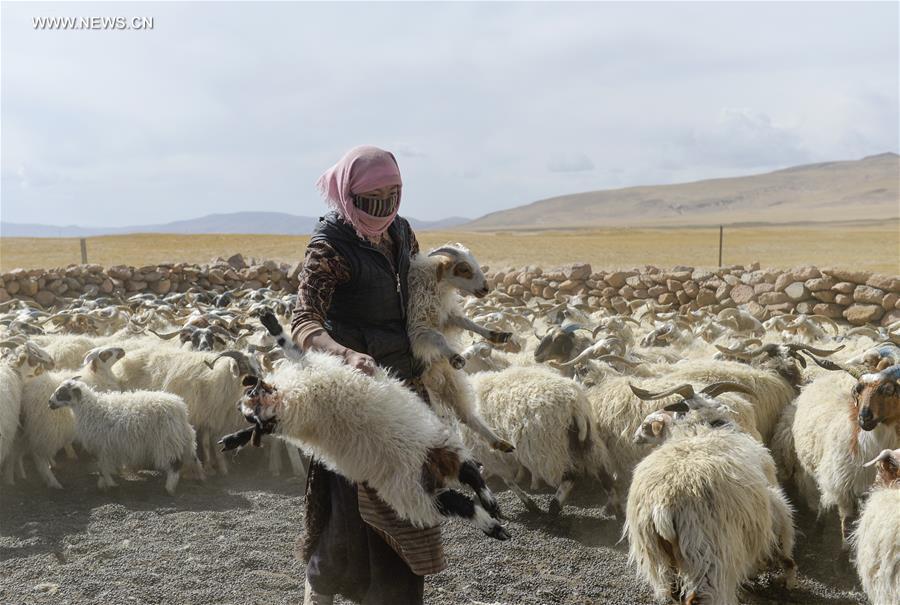
A herdsman catches a lamb in a sheepherd on the riverside of Nam Co, southwest China's Tibet Autonomous Region, May 5, 2016. A sheep castration ceremony, which has been observed for more than 1,000 years by the herdsmen living in the northern part of Tibet region, was held on the riverside of Nam Co. In order to breed sheep of the best quality, despite a few robust male sheep, most of the male sheep of more than 5 months old here will be castrated and bred as mutton sheep. (Xinhua/Liu Dongjun)

Herdsmen prepare to castrate male sheep on the riverside of Nam Co, southwest China's Tibet Autonomous Region, May 5, 2016. A sheep castration ceremony, which has been observed for more than 1,000 years by the herdsmen living in the northern part of Tibet region, was held on the riverside of Nam Co. In order to breed sheep of the best quality, despite a few robust male sheep, most of the male sheep of more than 5 months old here will be castrated and bred as mutton sheep. (Xinhua/Purbu Zhaxi)

Sheep are driven back to a sheepherd on the riverside of Nam Co, southwest China's Tibet Autonomous Region, May 5, 2016. A sheep castration ceremony, which has been observed for more than 1,000 years by the herdsmen living in the northern part of Tibet region, was held on the riverside of Nam Co. In order to breed sheep of the best quality, despite a few robust male sheep, most of the male sheep of more than 5 months old here will be castrated and bred as mutton sheep. (Xinhua/Purbu Zhaxi)
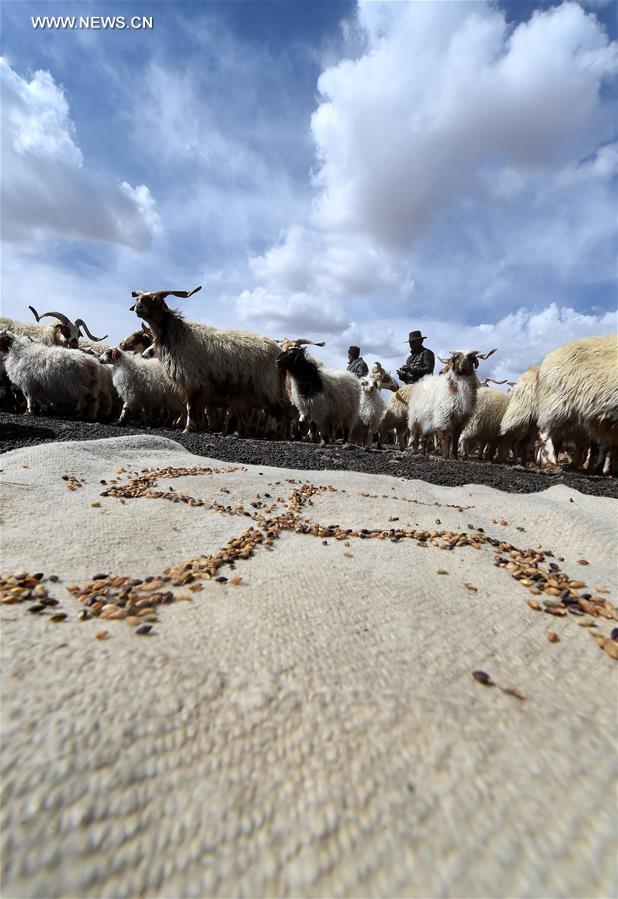
A Tibetan Buddhist sign for auspiciousness is seen at a herdsman family on the riverside of Nam Co, southwest China's Tibet Autonomous Region, May 5, 2016. A sheep castration ceremony, which has been observed for more than 1,000 years by the herdsmen living in the northern part of Tibet region, was held on the riverside of Nam Co. In order to breed sheep of the best quality, despite a few robust male sheep, most of the male sheep of more than 5 months old here will be castrated and bred as mutton sheep. (Xinhua/Chogo)
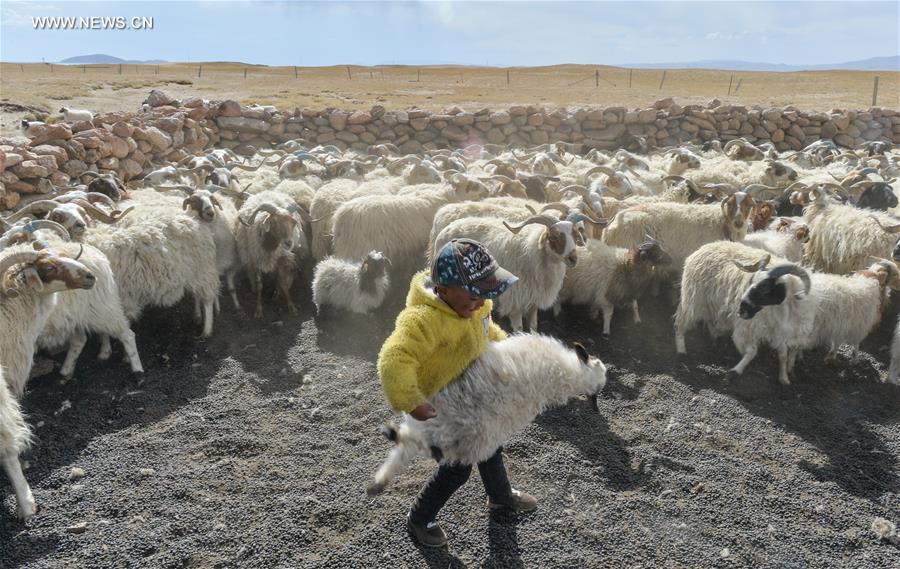
A child catches a lamb in a sheepfold on the riverside of Nam Co, southwest China's Tibet Autonomous Region, May 5, 2016. A sheep castration ceremony, which has been observed for more than 1,000 years by the herdsmen living in the northern part of Tibet region, was held on the riverside of Nam Co. In order to breed sheep of the best quality, despite a few robust male sheep, most of the male sheep of more than 5 months old here will be castrated and bred as mutton sheep. (Xinhua/Purbu Zhaxi)
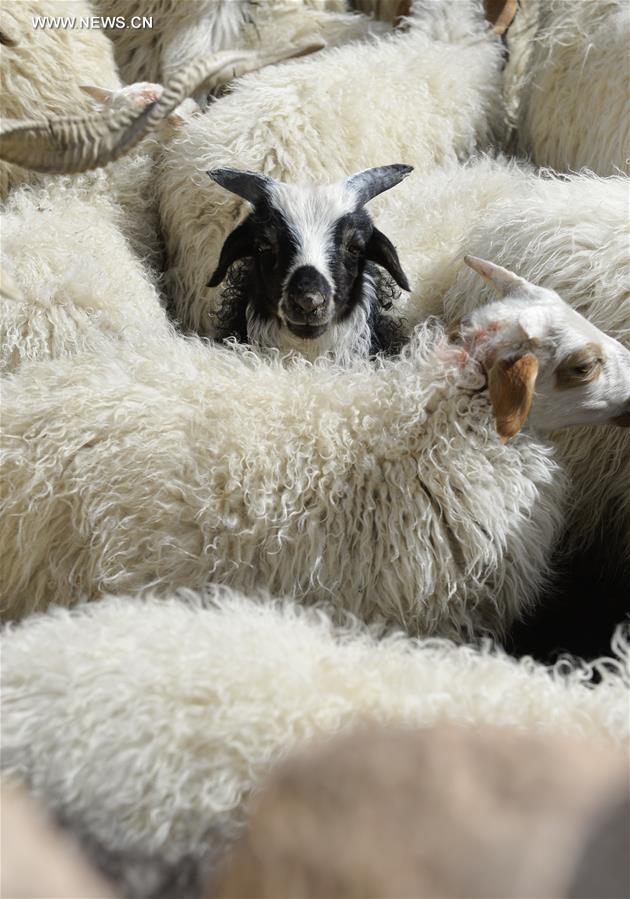
Lambs are seen for castration on the riverside of Nam Co, southwest China's Tibet Autonomous Region, May 5, 2016. A sheep castration ceremony, which has been observed for more than 1,000 years by the herdsmen living in the northern part of Tibet region, was held on the riverside of Nam Co. In order to breed sheep of the best quality, despite a few robust male sheep, most of the male sheep of more than 5 months old here will be castrated and bred as mutton sheep. (Xinhua/Liu Dongjun)

Sheep are driven back to a sheepherd on the riverside of Nam Co, southwest China's Tibet Autonomous Region, May 5, 2016. A sheep castration ceremony, which has been observed for more than 1,000 years by the herdsmen living in the northern part of Tibet region, was held on the riverside of Nam Co. In order to breed sheep of the best quality, despite a few robust male sheep, most of the male sheep of more than 5 months old here will be castrated and bred as mutton sheep.(Xinhua/Liu Dongjun) (lfj)
Your Comment
Name E-mailRelated News
More >>-
;

